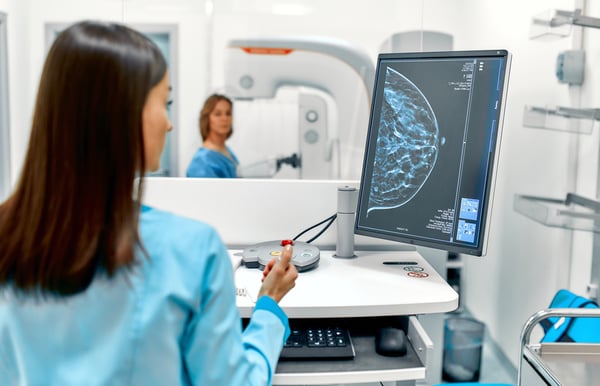Breast ultrasound VS Mammogram:

Can Mammography be replaced by Ultrasound?
We've recently seen a lot of online advertisements offering breast ultrasonography as an alternative to mammography.
Is it true that I can receive accurate findings using a breast ultrasound instead of a mammogram?
The common answer to this question is, No!
There are some mammography findings that are either less noticeable or not detectable on ultrasonography.

When is a breast ultrasound helpful?
Breast ultrasound creates digital images of the breast's interior using sound waves and their echoes. The ability to discern between structures that contain fluid, like cysts, and those that do not, like soft tissue masses, is assisted by ultrasound.
Following mammography, women with dense breast tissue will frequently undergo a breast ultrasound check since suspicious spots may be more difficult to spot on mammograms.
Moreover, ultrasound is frequently used to help direct a biopsy needle into the breast tissue where cells need to be removed and examined for cancer. The term "ultrasound-guided breast biopsy" refers to this process.
However, in each of these situations, an ultrasound examination is utilized as an additional screening tool rather than a substitute for mammography.

What is the method for a mammogram?
Mammograms come in two varieties: screening mammograms and diagnostic mammograms.
Women who do not have any breast symptoms or issues can get a screening mammography to check for breast cancer signals. Mammography creates images of each breast using low-dose X-rays, which the radiologist can subsequently interpret and review.
If a woman exhibits any type of breast symptom or if an unusual finding is found on screening mammography, a diagnostic mammogram is used. These tests could involve extra breast pictures that are typically not included in screening mammograms. Diagnostic mammography is occasionally used to check patients who have already undergone treatment for breast cancer.
Each mammography exam's main objective is to find breast cancer early when it can be properly treated.
The breasts are compressed for a brief period of time during the mammography so that images can be captured. Although many women are concerned that this may be painful, the procedure is actually quite quick. Breast compression is required to spread and flatten the tissue, which will provide the breast radiologist with the clearest image possible and prevent any abnormalities from being hidden.
Is a mammogram's radiation harmful?
During mammography, small amounts of radiation are administered to the breasts. According to the American Cancer Society, "the benefits of mammography outweigh any potential hazards from radiation exposure." In fact, the radiation dose used for screening mammography is comparable to the radiation exposure a woman would ordinarily receive in her natural surroundings over the period of about 7 weeks!
Benefits of Mammography
According to the National Cancer Institute, screening mammography can help reduce breast cancer fatalities among women aged 40 to 74 who are at average risk of breast cancer, based on many studies.
Annual mammography screening has been shown to reduce breast cancer-related mortality by up to 30% in the most rigorous, controlled clinical trials.
As a result, mammography remains the gold standard for breast cancer screening
Topic: General Surgery




.jpg)

.webp)



Leave a comment